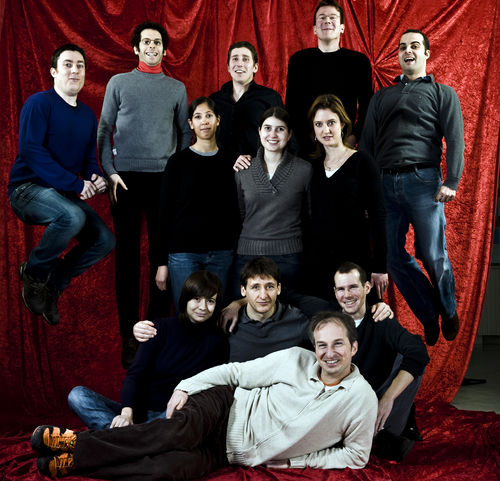Difference between revisions of "Welcome to the Computational Biology Group!"
| Line 1: | Line 1: | ||
| + | [[Category:Homepage]] | ||
| + | |||
== Welcome to the ''Computational Biology Group'' (CBG) at the ''[http://www.unil.ch/dgm/page13525.html Department of Medical Genetics]'' of the [http://www.unil.ch University of Lausanne]! == | == Welcome to the ''Computational Biology Group'' (CBG) at the ''[http://www.unil.ch/dgm/page13525.html Department of Medical Genetics]'' of the [http://www.unil.ch University of Lausanne]! == | ||
Revision as of 14:58, 21 May 2010
Welcome to the Computational Biology Group (CBG) at the Department of Medical Genetics of the University of Lausanne!
(This Wiki supersedes our previous homepage.)
We have interest in various fields related to Computational Biology, which are detailed in the Science section of this wiki. Briefly, there are two main directions: We develop and apply methods for the integrative analysis of large-scale biological and clinical data. This includes molecular phenotypes like gene-expression data, as well as organismal phenotypes (ranging from patient data to growth arrays). We focus particularly on relating these phenotypes to genotypes such as "Single Nucleotide Polymorphisms" (SNPs) and "Copy Number Variants" (CNVs) measured by microarrays or next-generation sequencing. Our goal is to move towards predictive models in order to improve the diagnosis, prevention and treatment of disease. A complementary direction of research pertains to relatively small genetic networks, whose components are well-known. We collaborate closely with experts of the field to identify biological systems that can be modeled quantitatively. Our goal in developing such models is not only to give an approximate description of system, but also to obtain a better understanding of its properties. For example, regulatory networks evolved to function reliably under ever-changing environmental conditions. This notion of robustness can guide computational analysis and provide constraints on models that complement those from direct measurements of the system's output.
In general, our group seeks an interdisciplinary approach, bridging the traditional gaps between physics, mathematics and biology. Our lab collaborates with experimental groups within and outside our department. In particular, due to our proximity to the CHUV we have close contacts to medical research groups and assist the analysis of clinical data.
Highlights of what's in this wiki:
- Research
- Projects (restricted to the CBG members)
- Teaching
- UNIL BSc course: "Solving Biological Problems that require Math 2010"
- UNIL BSc course: "Experimental design"
- UNIL MSc course: "Genes: from sequence to function 2009"
- UNIL BSc course: "Solving Biological Problems that require Math 2009"
- UNIL PhD literature seminar: "Systematic interpretation of genetic interactions using protein networks"
- UNIL MSc course: "Cartographie, séquençage et structure des génomes 2008"
- Summer school course: "Biologie und Medizin im digitalen Zeitalter: Jenseits der Disziplinen"
- SIB course: "Statistical analysis applied to genome and proteome analyses"
- UNIL PhD literature seminar: "Optimality and evolutionary tuning of the expression level of a protein"
- UNIL MSc course: "Cartographie, séquençage et structure des génomes 2007"
- CIG-DGM joint seminar: "Genome-wide Association Studies"
- UNIL PhD literature seminar: "Diffusion and scaling during early embryonic pattern formation"
- (currently imcomplete) list of group Publications
- The schedule for our Group Meeting and our Journal Club
- The Library
- How-to guides
- Running jobs on Vital-IT
- Submitting lots of jobs locally
- Packaging matlab to standalone
General info on this wiki
This wiki is the main instrument to centralize and archive information on and generated by the CBG. Creating new pages and editing existing content in the Wiki are restricted to CBG members, but by default the pages are world-readable. Drop an email to the admin if you want an account. If you are a CBG member (and have an account) you can find more information on this wiki by clicking on the Help link that is in the menu on the left.
